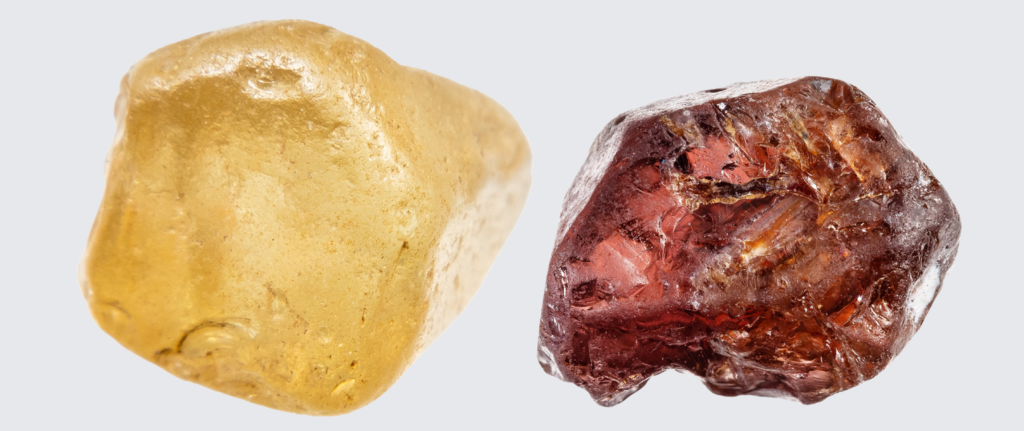While often overshadowed by diamonds and other precious stones, zircon is a gemstone that holds its own with remarkable brilliance, an intriguing history, and versatile applications in jewellery. This natural beauty, cherished for its diamond-like sparkle and diverse range of colours, has earned its place in the collections of jewellery connoisseurs and makers alike.

A Glittering History
Zircon is one of the oldest minerals on Earth, with some crystals dating back over 4 billion years. Its geological history is as captivating as its appearance, with the gemstone found in deposits across Sri Lanka, Cambodia, Myanmar, and Australia. Historically, zircon has been appreciated for its vibrant colours and refractive brilliance, with blue zircon gaining particular prominence during the 1800s as a popular feature in Victorian jewellery.
Notably, some of the most exquisite blue zircon pieces can be found in the Merriweather Post Collection, showcasing the gem’s use in estate jewellery from the late 19th and early 20th centuries. Today, zircon’s appeal continues to grow, with designers appreciating its unique optical properties and versatility.
The Sparkling Science Behind Zircon
Zircon is renowned for its high refractive index and strong dispersion, which produce the dazzling brilliance and fire often compared to diamonds. Its pleochroic nature means that it can display different colours when viewed from different angles, adding to its allure. The gemstone comes in an array of hues, including blue, yellow, green, red, orange, and brown, with blue being the most sought-after variety in the jewellery market. However, zircon’s brilliance comes with a note of caution. With a hardness of 6 to 7.5 on the Mohs scale, it is less durable than diamond or sapphire and is more susceptible to scratching and chipping. This characteristic makes it ideal for jewellery that sees minimal exposure to rough wear, such as pendants, earrings, and brooches.

Zircon in Jewellery Making
For jewellers, zircon offers both aesthetic appeal and affordability. High-quality zircon can be faceted to enhance its brilliance, with blue and colourless varieties often used as alternatives to diamonds in more affordable jewellery designs.
The gemstone’s diverse colour palette also lends itself to creative versatility. From statement cocktail rings showcasing vibrant reds and greens to delicate necklaces featuring pastel-hued stones, zircon offers endless design possibilities. Moreover, its availability in larger sizes allows jewellers to create bold and eye-catching pieces without the premium costs associated with other gemstones.

Advertisement
The Market for Zircon
While zircon is generally more affordable than many other gemstones, rare and high-quality specimens can command premium prices. For example, richly coloured blue zircons or those exceeding 10 carats in weight can fetch thousands of dollars, depending on their clarity and cut. Orange-brown zircons, known for their warm tones, can also reach prices upwards of $95 per carat for exceptional stones.
However, zircon’s accessibility is part of its charm. Its affordability makes it a favourite among both emerging designers and seasoned jewellers seeking to offer clients a gemstone with beauty and value.
A Stone with Enduring Appeal
Zircon’s ancient origins, scintillating brilliance, and rich array of colours have established it as a gemstone with timeless appeal. For jewellers, it presents an opportunity to craft pieces that blend historical elegance with contemporary design. From heirloom-quality jewels to accessible yet sophisticated adornments, zircon continues to captivate, proving that beauty and brilliance are not confined to the most expensive stones.
Whether featured in an intricate Edwardian-inspired piece or a modern minimalist design, zircon is a gemstone that delivers brilliance, versatility, and a touch of history to every creation. For jewellery makers and enthusiasts alike, it remains a gem worth celebrating.
Advertisement



